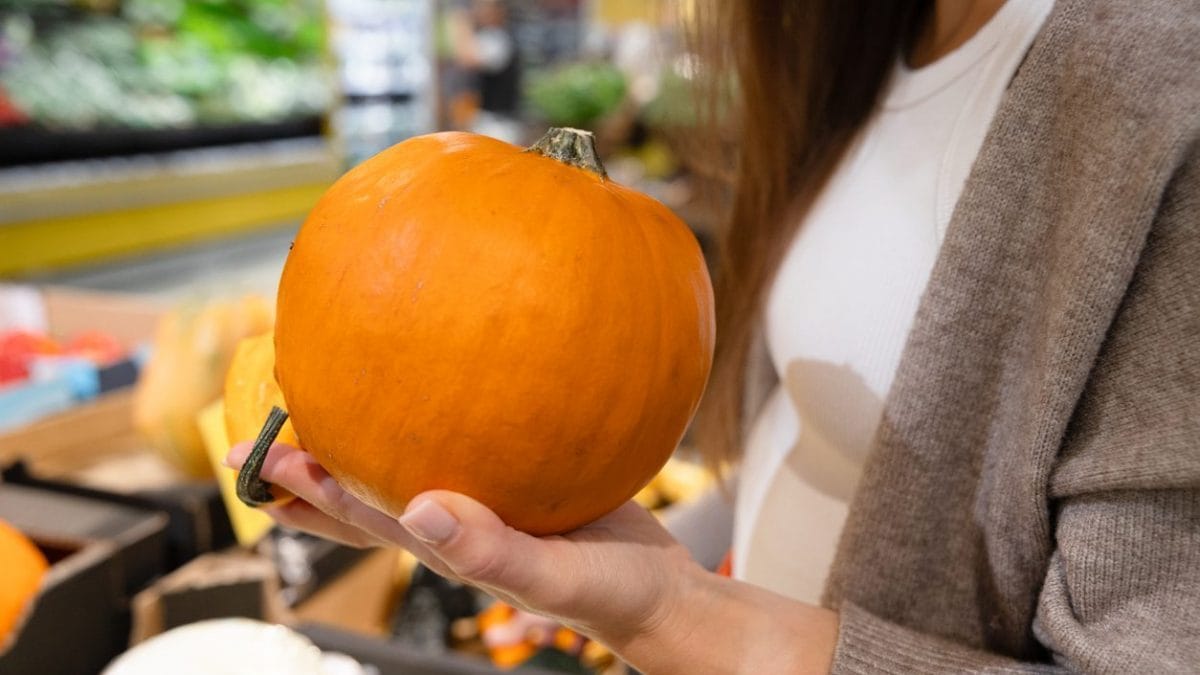
Pumpkin is one of the undisputed stars of autumn and winter, one of the most eagerly anticipated vegetables, and one that can even console those nostalgic for the warmer months thanks to the delicious recipes featuring it. Obviously, rather than in the singular, we should speak of it in the plural, because we have so many varieties of pumpkins available: depending on their characteristics, they enhance different dishes, both sweet and savory. Below, you'll find advice on how to choose a good pumpkin, how to clean it, how to store it, and some ideas for showcasing it in the kitchen.
How to Choose a Pumpkin
When you buy a pumpkin, you often run the risk of being disappointed, a bit like with a watermelon: it tastes like nothing. And the very details that help us recognize this famous summer fruit can help us choose the right vegetable. Of course, not all pumpkins are the same, but some parameters are common.
1. Seasonality

Pumpkins are available for a long time: apart from early and late varieties, they are generally harvested between the end of August and the end of November. Their best time is autumn, before the frosts begin. Therefore, October is the best time to buy them.
2. Appearance
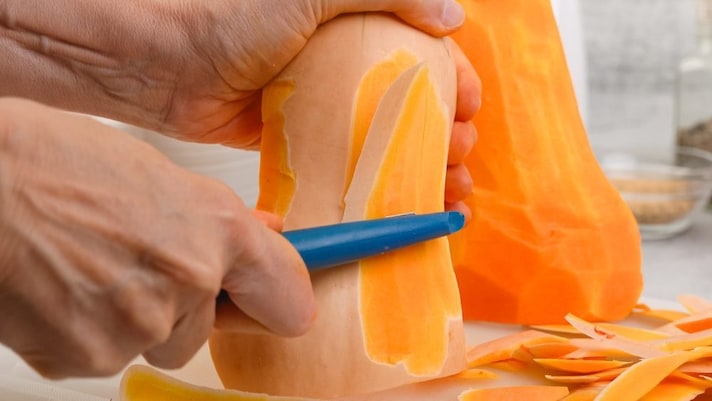
When the pumpkin is whole, the peel is opaque, not shiny, a sign that it was harvested at the right stage of ripeness. The surface must be intact, without signs of cracking or bruising.
3. Consistency

The pumpkin's rind, whether thin or thick, must be hard: if the vegetable feels soft or flexible when touched, then it was probably picked too early.
4. Weight
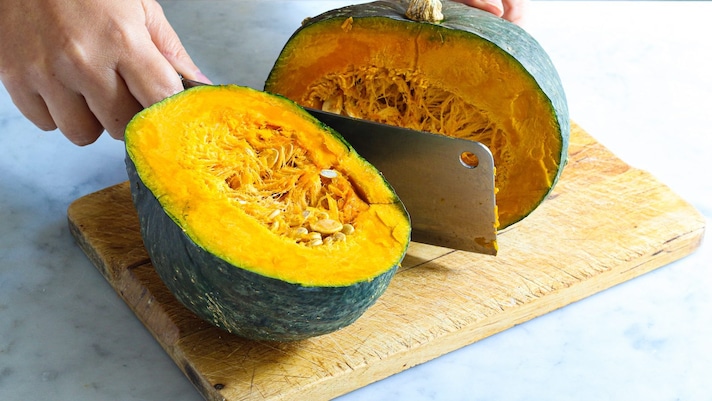
Between two pumpkins of the same variety and size, choose the heavier one. This means the flesh is firmer, drier, and less watery, resulting in a tastier flavor.
5. Sound
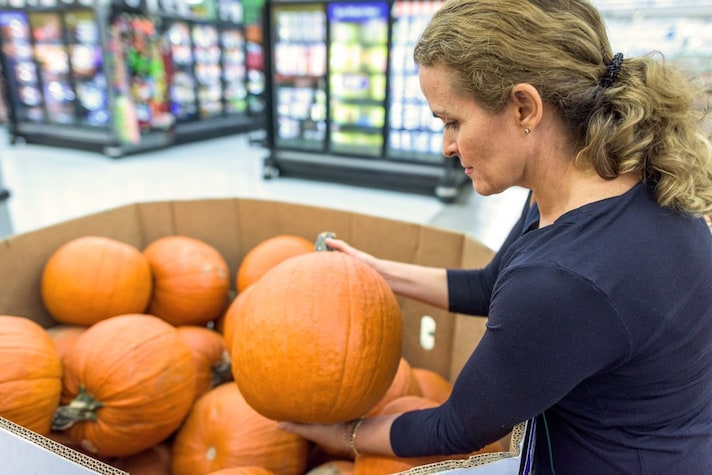
Just as you tap a watermelon, you tap a pumpkin. What does it mean? The very popular trick is to lightly tap the rind with your knuckles and listen for the sound that comes back: a hollow, deep sound indicates rich, compact flesh; a muffled sound, however, indicates excessive water content, which means little flavor.
6. Stalk
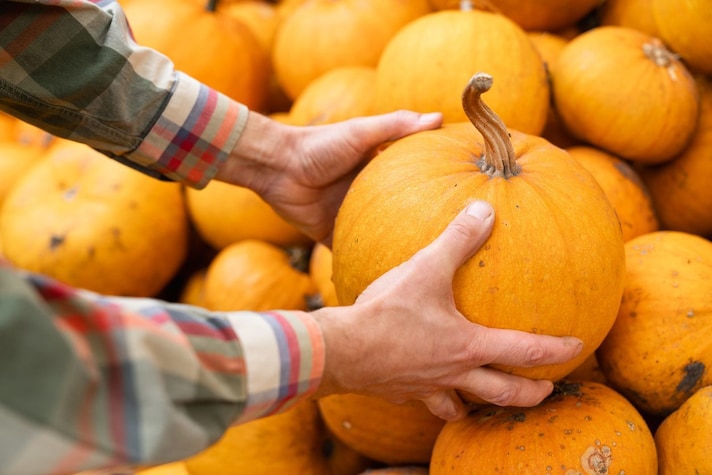
A small but valuable clue: if there is one, look at the stem: when the vegetable is fully ripe, it is dry, curled, and brownish in color. If it is still green and "fresh," it means the pumpkin is not ready.
What About Pre-Portioned Pumpkin?
At the supermarket, it's easy to find pre-portioned pumpkins: these are the large ones, which cannot be sold whole, or the chunks and segments in ready-to-use trays. It's a good idea to check that the flesh is firm, uniform in color, and free of soft or dark spots. The surface should be dry, never moist or stringy. Consume by the expiration date indicated on the package or wrapping.
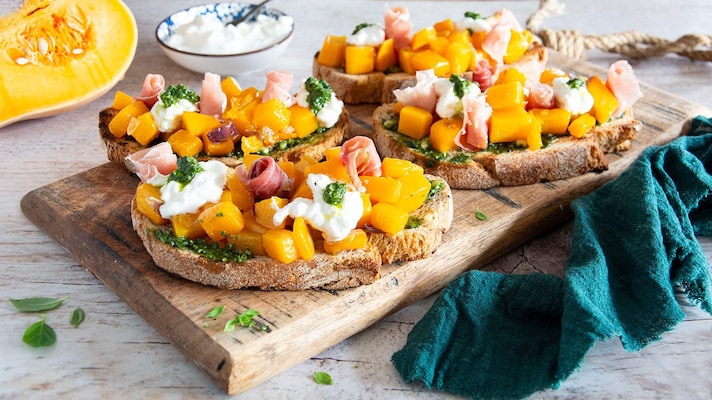
How to Clean and Store Pumpkins
Once you bring the pumpkin home, it requires a little patience to clean, but the process is not complicated. After washing and drying it, cut it in half with a sturdy knife. Inside is the central part with the seeds, which should be removed with a spoon. Don't throw them away: toasted in the oven, they keep for a long time and can be used to enhance salads, homemade breads, and soups, or as a healthy snack. Once the strings are completely removed, proceed by cutting the pulp into wedges or cubes, depending on the recipe. Not all pumpkins require peeling, which is an advantage: for example, varieties like Hokkaido, Delica, and Butternut are edible, as it is thin and softens during cooking. This speeds up preparation, you'll have less waste, and also more fiber, vitamins, and minerals. If the peel is hard and tough, however, you should remove it, being careful not to hurt yourself.

A great advantage of pumpkins is their long shelf life: whole and intact, they last several months if stored in a cool, dry place. The ideal place is a dry cellar if you plan to store them for longer. If you plan to consume them within a few days, you can keep them in the kitchen, away from direct light, heat, and drafts. When a pumpkin is cut, however, it is stripped of its protective covering and is therefore subject to rapid spoilage: the exposed part of a pumpkin half, for example, should be covered with plastic wrap and kept in the refrigerator for about 3-4 days. The same timeframe applies to raw pumpkin cut into chunks or slices, which should be kept in airtight containers or plastic bags. Freezer? Yes, of course. In this case, the pulp should be blanched for a few minutes and then placed in special freezer bags, used in soups, flans, and creams.
How to Cook and Pair Pumpkin
It would probably be easier to write how not to use pumpkin in the kitchen. The beauty of this vegetable is its versatility: it is used in the most diverse recipes, from rustic ones of peasant origins, to more refined ones, which hark back to medieval and Renaissance courts, passing through creative ideas, crossing the entire menu, from appetizers to desserts. The different varieties, then, adapt to specific types of dishes that enhance their flavor – more or less sweet – and the consistency – floury or compact, moist or dry – of the pulp. Pumpkin can therefore be steamed, boiled, baked, pan -fried, in the air fryer, grilled, enjoyed as a side dish or as a basic preparation, for example when blended or mashed to become a puree to be used in risottos, pasta dishes, as a filling for cakes or stuffed pasta. Fun are the meatballs, cutlets and burgers, vegetarian alternatives and must-try, irresistible lasagna and tiramisu with a wow effect.
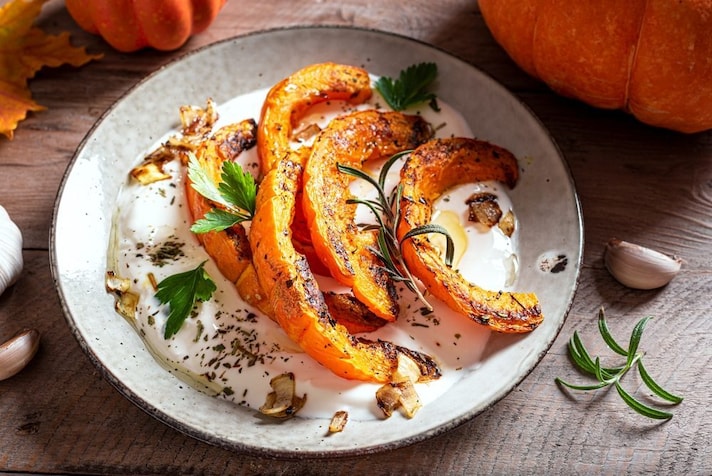
As for pairings, everything revolves around its delicate sweetness: green light is given to aromatic herbs with warm notes such as sage, bay leaves, thyme and rosemary, which, combined with extra virgin olive oil, add a simple flavor (see schiacciata). Sweet and sour and slightly spicy combinations are very tempting, such as those with mustard, cinnamon, nutmeg, raisins, and dried fruit: they are found in traditional recipes such as Mantua pumpkin tortelli, in successful reinterpretations, such as sarde in saor, and in desserts, such as pumpkin pie. Among its best friends are cheeses, especially aged and blue cheeses, which add flavor: just think of jam or pumpkin in oil to bring to the table with the brunch platter, and the combination of pumpkin and gorgonzola, a real must-have. The same function is used for cured meats and sausages: speck and sausage also add that touch of “salt” , for simple and appetizing main dishes.
;Resize,width=767;)
